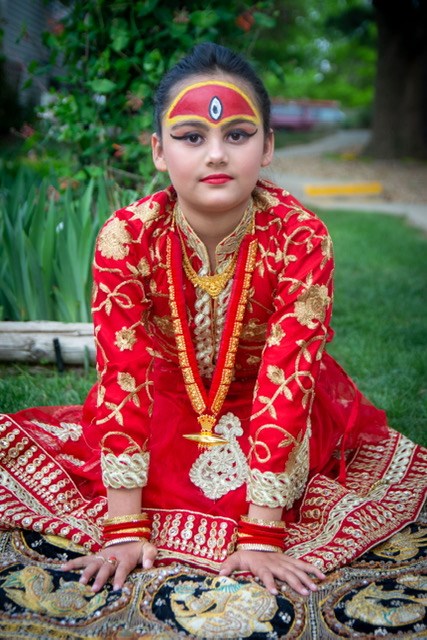After arriving in Longmont, Rita Liu wanted to be more involved in the community. So, she joined the Multicultural Action Committee. In the first meeting she looked around the room and noticed that there was no one from the Asian community present.
“So I said, maybe I can help expand the program to reach different communities, especially the Asian communities. That’s why I started the Asian-Pacific Association of Longmont,” Liu said.
Liu is the president and founder of the Asian-Pacific Association of Longmont. She has used this position to educate the Longmont community about Chinese culture.
Liu partnered with the Silver Creek Leadership Academy to bring the Chinese New Year program, eleven years ago. Through the event the community has been able to learn more about cultural foods, dances and several booths which teach different parts of the culture including Chinese painting.
“Rather than talking about promoting multiculturalism we showcase Chinese culture in a very pleasant, enjoyable environment. Everybody is so happy,” Liu said.
Another reason she started the association was because she noticed that Chinese immigrants and Americans hosted all kinds of activities, but they were reserved for their community alone.
In her programs, she wants to reach a variety of diverse communities and expose them to Chinese culture. Liu sees this event as an opportunity to be exposed to other cultures, and other cultures to learn about Chinese culture.
“The last few years, when people walk by the booths we ask about 100 people ‘what culture did you come from?’ We want to know how many cultures we serve. I locked down all the cultures from different cultural backgrounds, and we found 90 some different cultural backgrounds,” Liu said.
Liu argues that Asian Pacific Heritage month helps bring awareness to the Asian community and helps to combat negative perceptions of the community. She believes this month is an opportunity to showcase the diversity efforts that are underway within the community.
“You have to prove yourself, you cannot demand people’s respect. You have to earn the respect, never demand,” Liu said.
Carmen Ramirez, community and neighborhood resource manager for the city of Longmont, explains that building relationships is at the foundation of understanding other cultures' lives and their value to the community.
“I always think we have these hidden gems that not everybody sees, but we see them, because we have relationships within those communities and we see the community as a shining gem. We want to offer that in different ways from celebration to education to relationships,” Ramirez said.
While Ramirez believes that months dedicated to a specific racial or ethnic group are important, she does not believe that events should be scheduled solely based on said month. Instead, she lets the communities come to her, or the Multicultural Action Committee, to schedule the events when they would like them.
“I would say we really haven’t gotten to the point where we program month by month. We really have been programmed based on the communities and highlighting all the different communities. We are doing that without being attached to a calendar,” Ramirez said.
For four years Sunanda Dangol has been going to the Multicultural Action Committee trying to implement a Nepali celebration, but it never worked because she lacked the funds. This year, she finally found the financial backing to host the first ever “Nepali Jatra” celebration in Longmont.
“This month is kind of a reminder for people with passion that they’re knocking at your door and we should do something,” Dangol said.
One celebration that will occur at the event is Kumari which is based on the legend that the goddess Taleju, used to meet with King Jaya Prakash Malla. However, these meetings stopped after King Jaya Prakash Malla betrayed her. She vanished, until she appeared in his dream telling him that she will reappear in the body of a young girl from the Buddhist Shakya clan, according to Dangol.
Today, Kumari honors this legend. The celebrations include parades, and the selected Kumari is carried on a golden chariot who wears the sacred color red.
The celebration of this event is really important for Dangol because in Nepal kids rarely learn about the purpose behind their cultural celebrations. Dangol wants the next Nepali American generation to know what they are celebrating and most importantly why.
“Our kids were never taught the culture and if they do not know, it doesn’t come from within. They’re kids, only exposing them is not enough. They need to know the core,” Dangol said with tears in her eyes.
In the future, Dangol hopes to start a workshop for kids, particularly Nepali children, to teach them the stories and myths from Nepal. The first step in this education and exposure process for the Longmont community and youth is the Nepali event.
Dangol explained one problem is the lack of resources for Nepali members and youth to explore their culture in an academic setting.
“You wouldn’t believe there is no Nepali literature in the Longmont library. My friend found one book in the Aurora Public library, and she was ecstatic to find one book. The Longmont Library should be making an effort too, if it is not (its own) section, (they should purchase) at least 100 books to start with,” Dangol said.
Dangol believes that increasing education and awareness of the Asian and Nepalese community will help kids and adults maintain their cultural identity. She believes that Nepalese children are losing that identity, and with her efforts she hopes to make kids proud of their heritage.
“Confidence is the key. If they know what they are taught, and they believe ‘I am an individual with a cultural identity’, even if somebody comes and bullies the person, they still have that confidence to fight it,” Dangol said.



